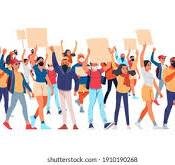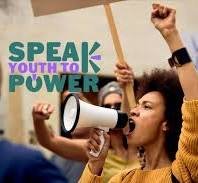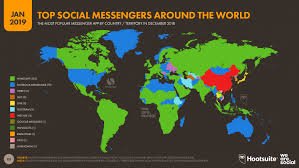Introduction
Politics is often seen as the game of seasoned leaders and powerful institutions, but in recent years, a new force has begun to shape the political landscape — the youth. Across the world, young people are stepping out of classrooms and into parliaments, movements, and protests. Youth and student politics represent not only a demand for change but also the future direction of governance and democracy itself.
From university campuses to social media platforms, young voices are becoming louder, bolder, and more influential than ever before.

What Is Youth & Student Politics?
Youth politics refers to the political participation of young people — through activism, voting, volunteering, or leading political organizations.
Student politics, on the other hand, focuses on the involvement of students in educational institutions, often through unions or movements that represent their rights and opinions.
Together, these two forces act as a bridge between education and leadership, teaching young citizens how democracy works and how their voices can shape national agendas.
The Role of Youth in Modern Politics
Young people make up a large percentage of the population in most countries. In nations like Pakistan, India, and Nigeria, over 60% of the population is under 30 — meaning the majority of voters are youth.
When this generation becomes politically active, it changes everything:
- New issues come to the surface (education reform, job creation, climate change).
- Old leaders are challenged to adapt to new ideas.
- Politics becomes more digital, transparent, and people-driven.
Youth bring energy, creativity, and digital awareness — all crucial for progress in today’s fast-changing world.
Student Unions: The Training Ground for Future Leaders
Across the world, student unions have played a key role in shaping political movements. These unions often serve as the first platform for leadership, debate, and policy-making experience.
Examples:
- In Pakistan, student movements of the 1960s and 1970s had a strong influence on national politics.
- In the United States, student protests during the Vietnam War changed public opinion and government policy.
- In Europe, student activism helped promote democratic values and social reforms.
Many of today’s leading politicians began their journeys in student unions, where they learned how to organize, negotiate, and lead.

Why Youth Participation Matters
- Innovation in Politics: Young people bring new perspectives and technology-driven solutions to governance.
- Accountability: Youth demand transparency, honesty, and performance from leaders.
- Representation: They ensure that policies reflect the needs of the next generation, not just the older one.
- Social Awareness: Youth are often the first to take action on issues like gender equality, digital rights, and environmental justice.
In short, youth participation revitalizes democracy.
The Role of Social Media in Youth Politics
Social media has become the modern political battleground. Platforms like X (Twitter), Instagram, and TikTok allow young activists to share ideas, organize protests, and influence millions within hours.
Hashtags like #BlackLivesMatter, #ClimateStrike, and #FreePalestine show how youth-led movements can gain global support and shape real-world policies.
Digital activism has also made it easier for students in remote areas to raise their voices, making politics more inclusive and accessible.
Challenges Faced by Youth & Student Politics
While youth involvement is growing, several challenges still exist:
- Lackhttps://www.politico.com/ of Representation: Older politicians often dominate parties and decision-making positions.
- Limited Resources: Young activists rarely have the funding or networks needed for political campaigns.
- Political Suppression: In some countries, student unions are restricted or banned to prevent dissent.
- Misinformation: The rise of fake news can mislead or divide young voters.
- Cynicism: Many youth lose faith in politics due to corruption and unfulfilled promises.
Despite these challenges, youth continue to push for inclusion and reform.
Famous Examples of Youth Movements
- Fridays for Future (Global): Started by Greta Thunberg, this youth-led climate movement inspired millions worldwide.
- Arab Spring (Middle East): Young protesters used social media to demand democracy and human rights.
- Hong Kong Protests: Student-led demonstrations for freedom and autonomy gained global attention.
- #MeToo and #EndSARS: Online youth-driven campaigns that forced governments and corporations to change policies.
These examples prove that young people can drive global change when united by purpose.

The Future of Youth Politics
As education levels rise and technology continues to connect people, youth will become the most politically powerful generation in history.
The future of youth and student politics will focus on:
- Digital Democracy: Online voting, virtual campaigns, and AI-driven political engagement.
- Green Politics: Youth-led initiatives to fight climate change and promote sustainability.
- Equality Movements: Pushing for diversity, inclusion, and social justice in every sector.
- Global Collaboration: Students across nations working together for common causes.
The youth of today are not just followers—they are leaders in the making.

Conclusion
Youth and student politics represent hope, progress, and transformation. Every great political movement begins with a spark — often lit by young minds who dare to dream of a better world.
Empowering youth means empowering the future. When given the right opportunities, education, and voice, today’s students can become tomorrow’s reformers, ministers, and presidents.
The world changes when young people refuse to remain silent — and right now, their voices are echoing louder than ever.
